SUMMARY
This is AI generated summarization, which may have errors. For context, always refer to the full article.
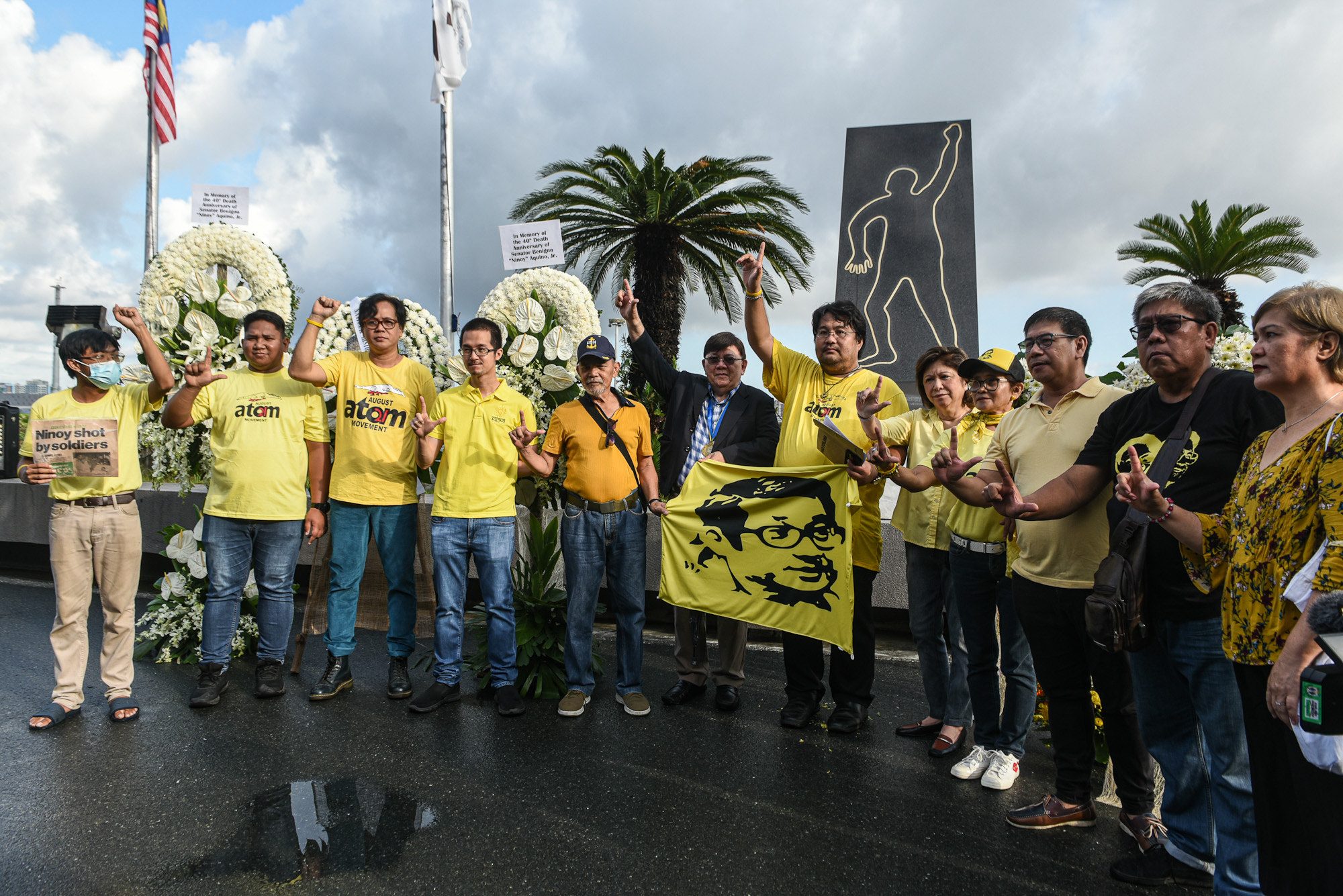
MANILA, Philippines – On August 21, 1983, opposition senator Benigno “Ninoy” Aquino Jr. was assassinated upon his return to the Philippines during the regime of Ferdinand E. Marcos. Forty years later – and under the administration of another Marcos – a small crowd of supporters gathered to commemorate the democracy icon at the airport where he was gunned down.
This is the second Ninoy Aquino memorial event held on the grounds of the Ninoy Aquino International Airport (NAIA) during the administration of President Ferdinand “Bongbong” Marcos Jr., the son and namesake of the late dictator that Aquino stood fiercely against.
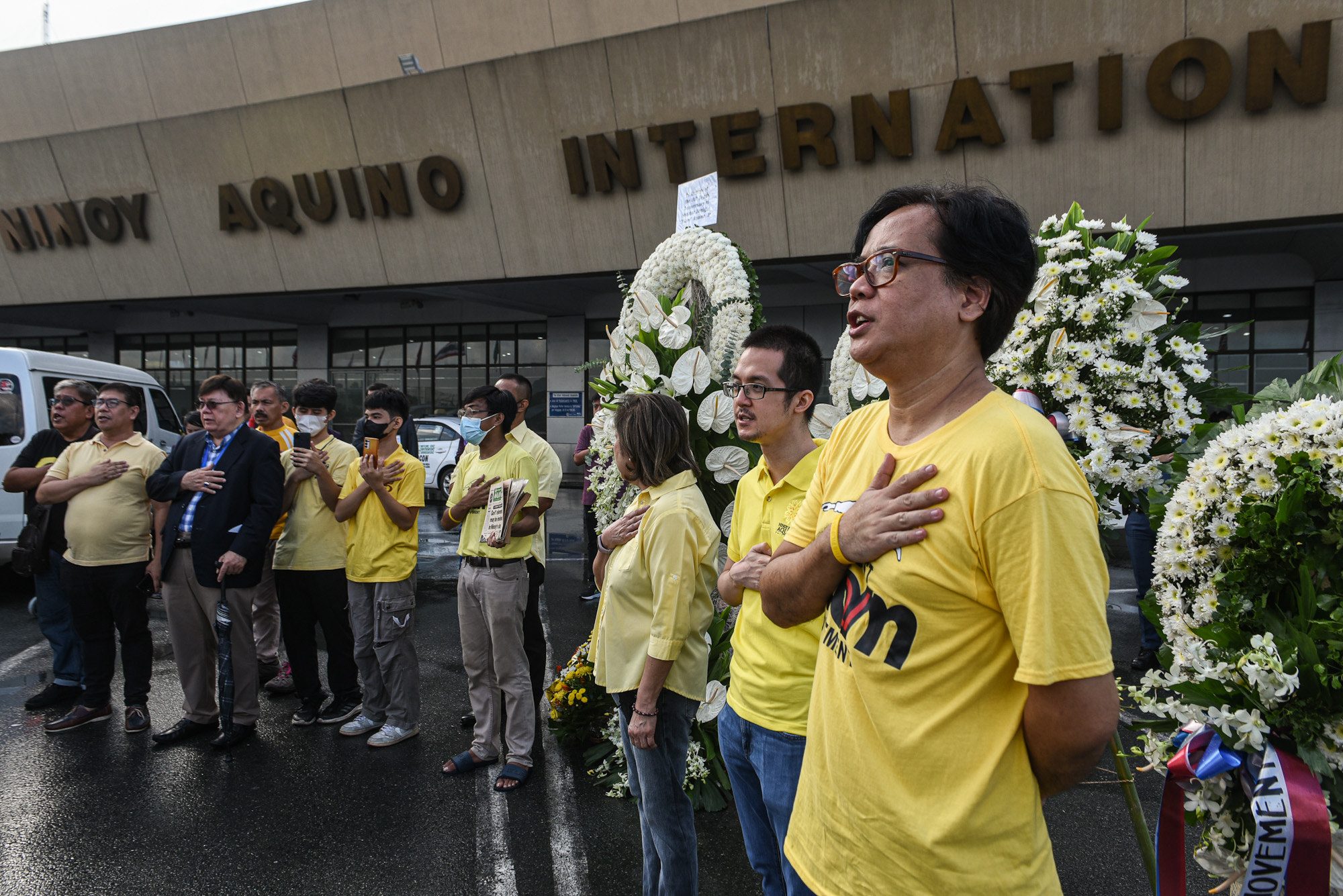
In attendance were Aquino’s grandson Francis Joseph “Kiko” Aquino Dee, the lone eyewitness to the assassination Rebecca Quijano, historian Xiao Chua, and Manila International Airport Authority Assistant Terminal Manager Rodel Oba. They dressed in yellow and flashed the “laban” sign, symbols of the People Power Revolution that toppled the regime of Marcos Sr.
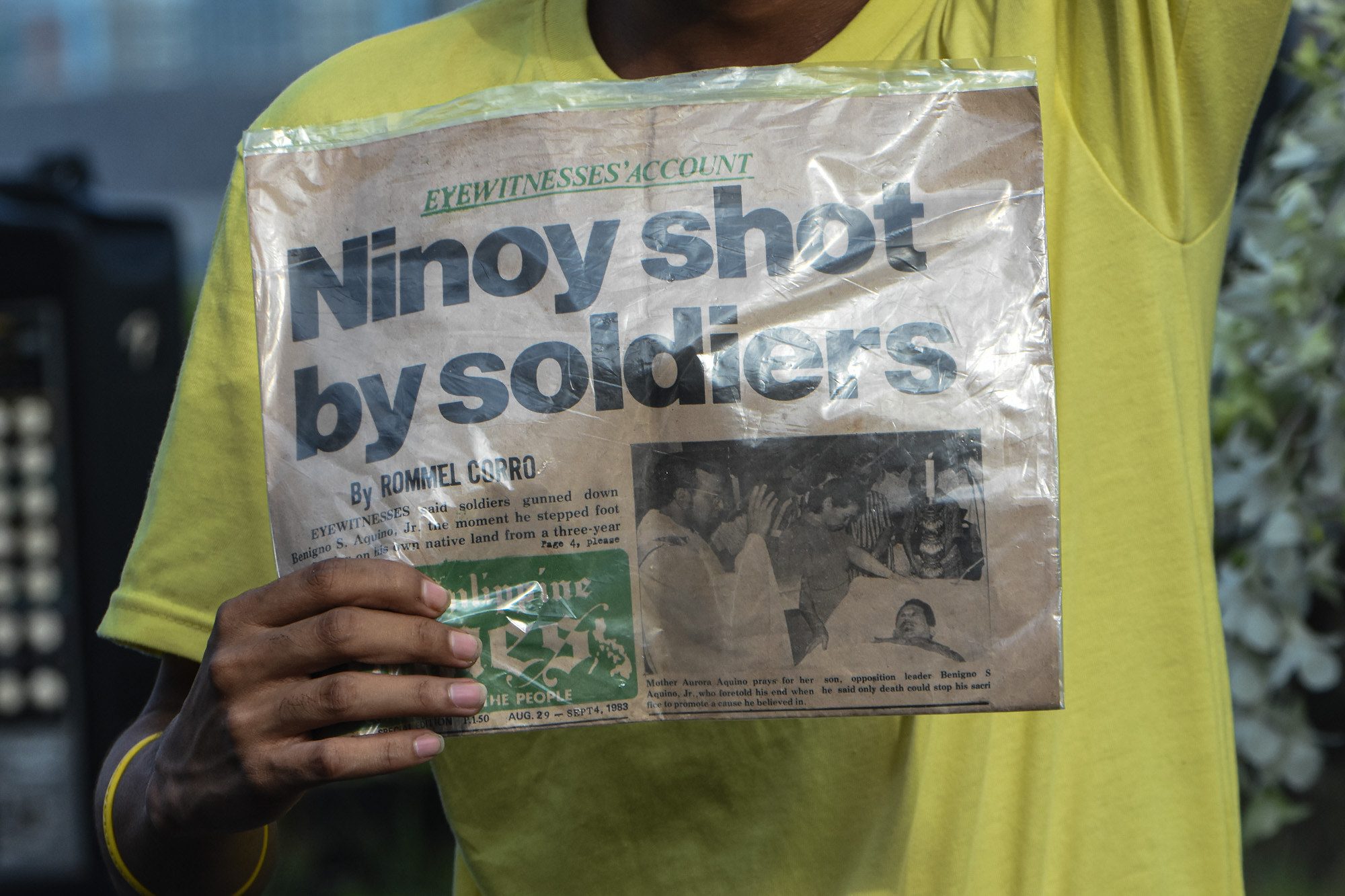
Among the many triggers of this military-backed civic movement was the blood spilt in the grisly assassination of Aquino.
The opposition leader had been among the first to be arrested by state forces when Marcos imposed martial law in September 1972. He spent years in jail on false charges before being allowed to seek treatment for a heart condition in the United Sates. Aquino eventually chose to return to the Philippines despite the warnings of his supporters and even of then-First Lady Imelda Marcos against returning.
Aquino landed in what was then called the Manila International Airport on August 21, 1983. He never made it past a few steps on the tarmac before he was shot in the head at close range.
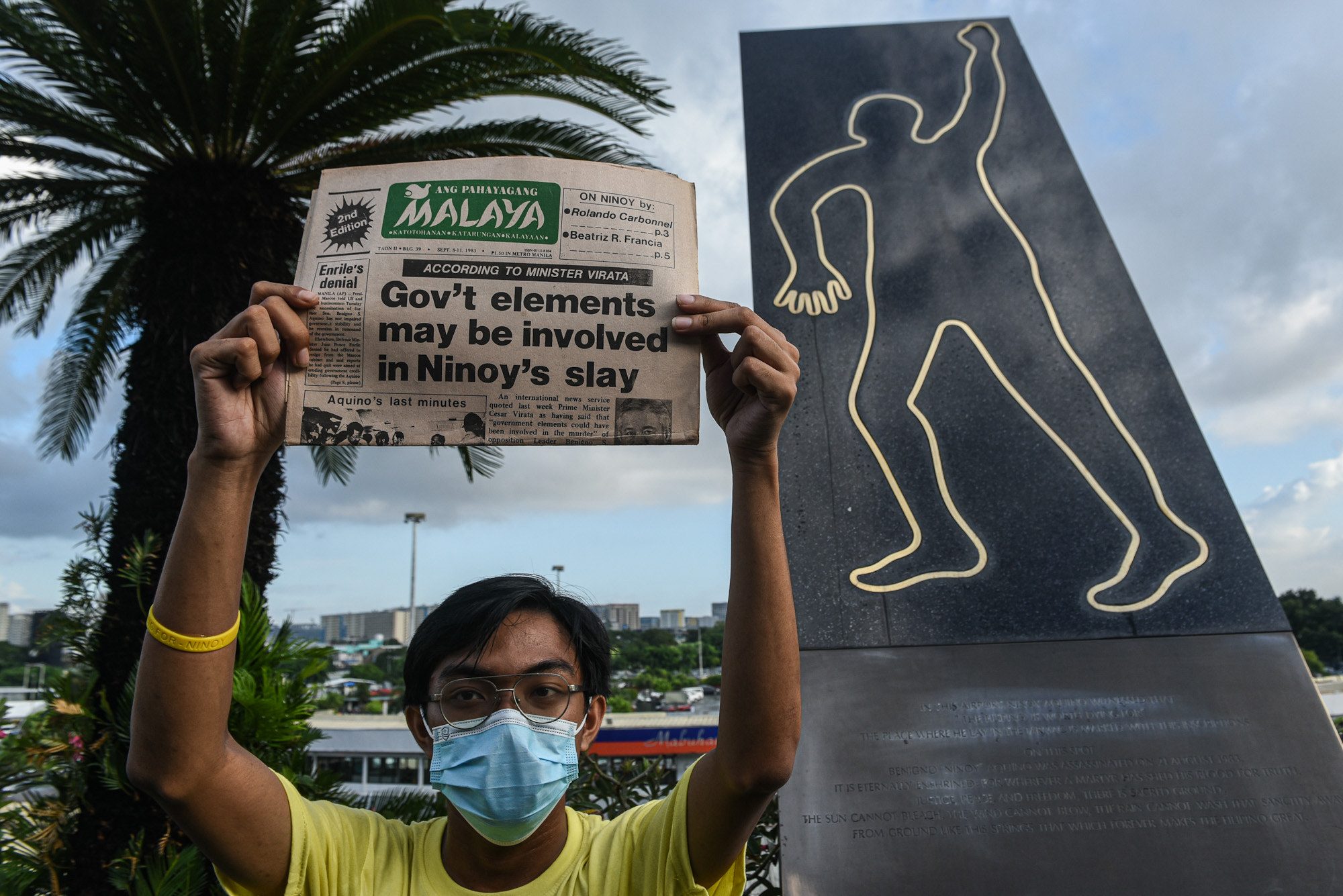
A memorial plaque now marks the spot where he was slain, and a sketch of his body stands at Terminal 1. Four years after the assassination and with the dictator ousted, President Corazon Aquino renamed the airport where her husband died to Ninoy Aquino International Airport.
Now, under the Marcos Jr. administration, there have been several attempts to rename the airport. One proposal, filed by disgraced ex-congressman Arnolfo “Arnie” Teves, seeks to rename NAIA to Ferdinand E. Marcos International Airport, based on the false claim that it was built during his administration. Meanwhile, Davao City 1st District Representative Paolo Duterte – son of former president Rodrigo Duterte – wanted NAIA to be renamed Paliparang Pandaigdig ng Pilipinas (International Airport of the Philippines). Disbarred lawyer Larry Gudon also tried to have the Supreme Court restore NAIA’s original name – a petition that was quickly denied.
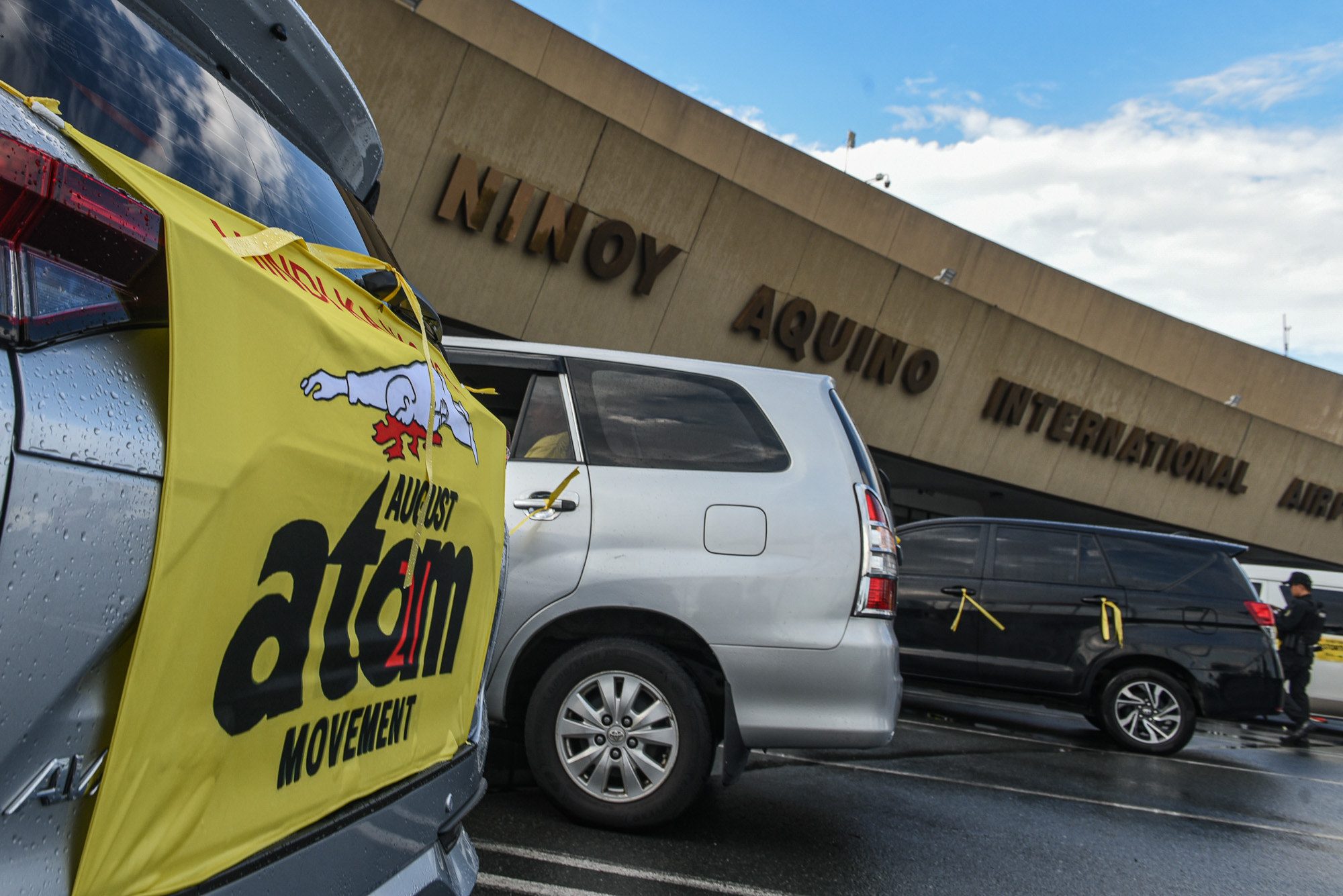
Although President Marcos said that renaming the country’s main gateway is not a priority for him, the storied history of the airport may have to be updated as his administration has swiftly approved the rehabilitation and privatization of what they call the “Manila International Airport.”
“One major project that the DOTr will implement this year is the modernization and upgrading of the Manila International Airport,” Department of Transportation (DOTr) Secretary Bautista said on July 26, after Marcos’ State of the Nation Address.
“This is one of projects for the airport that we think we will be implemented soon. It will increase the capacity of the Manila International Airport, considering that this airport is already congested with only capacity of 32 million passenger per year, but now handling more than 40 million passengers,” Bautista added. – Rappler.com
Add a comment
How does this make you feel?
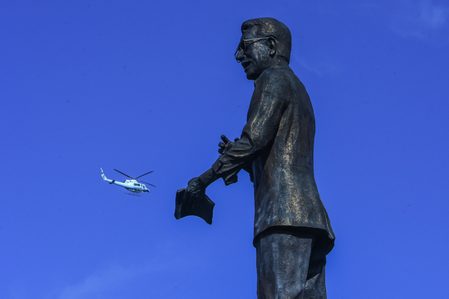

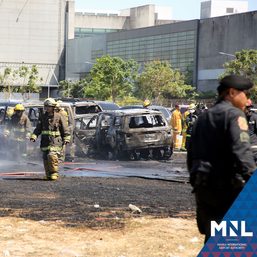
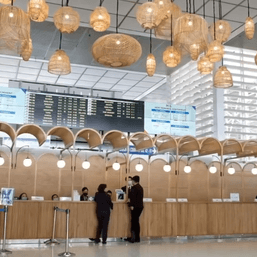
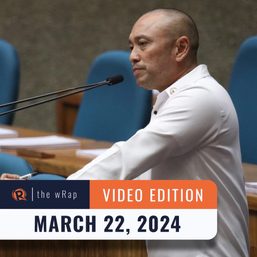
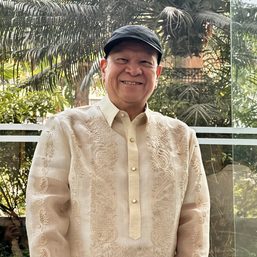
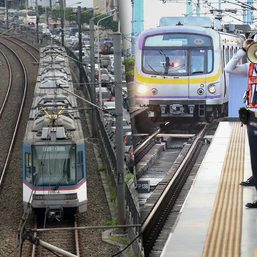



There are no comments yet. Add your comment to start the conversation.